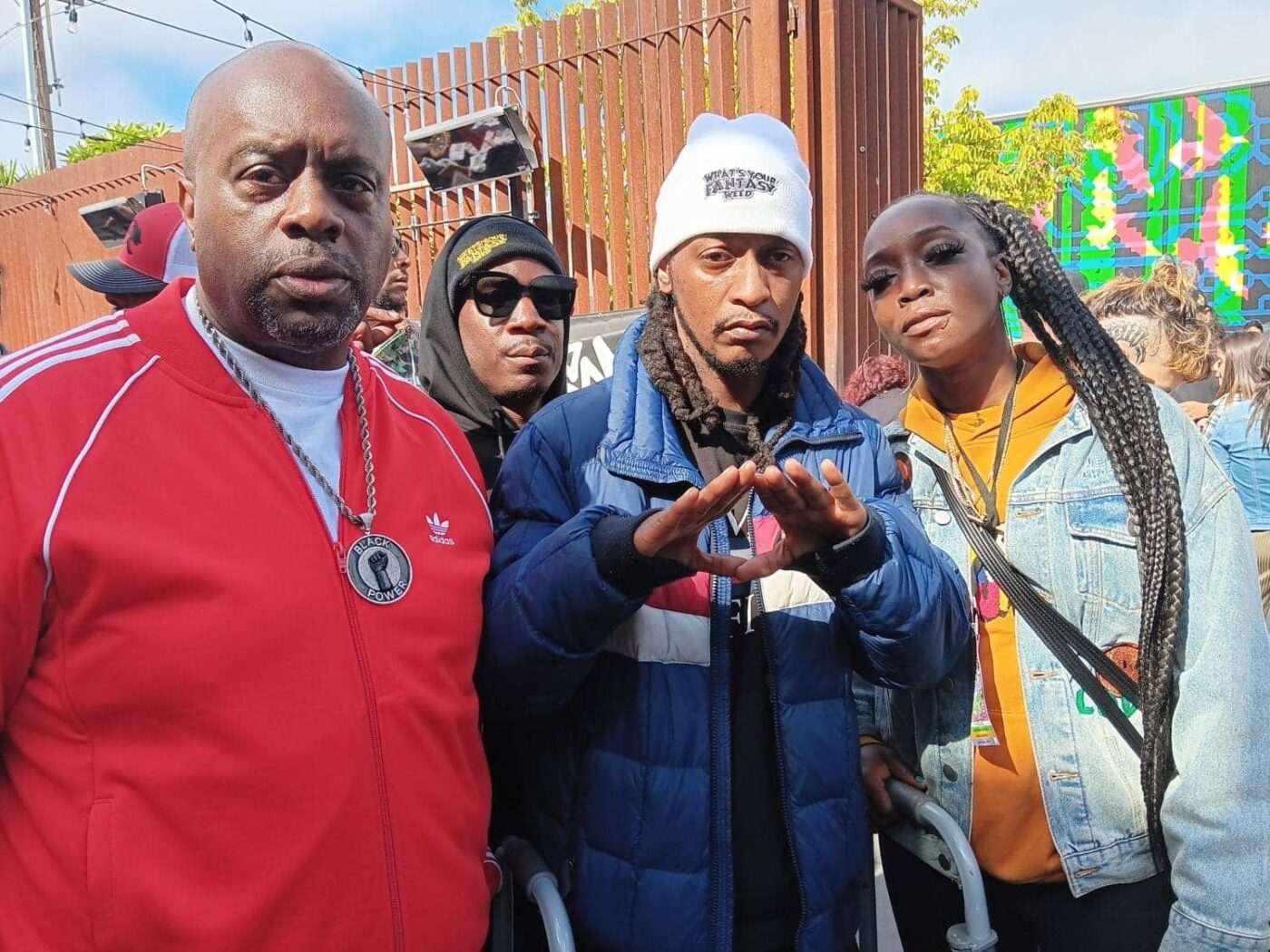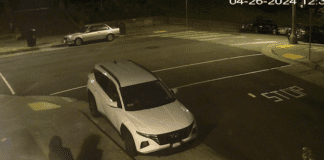
by SF Bay View Editor in Chief JR Valrey
If people are going to celebrate 50 years of Hip Hop, locally we have to go to the Bay Area pillars of the art form to see where this all started. The story of Herm Lewis from Hunters Point is one of those stories that you wouldn’t believe me if I told you from my mouth. He is a man who came from a Bay Area ghetto, and alongside his street savvy brothers he became somebody in the streets. Then he started getting high on his own supply.
The story includes incarceration, crack hoes and relapses, the legendary rap group RBL, the new Hunters Point artist on the scene Larry June and more. This is just Part 1. Look out for Herm Lewis Part 2 coming soon.
JR Valrey: One of the things that I have heard about you since I have been working at the SF Bay View is that you come from one of the big and notorious families in the streets of San Francisco. Can you talk a little bit about who the Lewis family is to Hunters Point?
Herm Lewis: We were legendary. We started off building a reputation from being young kids physically able to defend ourselves as far as street fights go, and then as the years went by, we all became attracted to the finer things in life. It was a total of five of us, but two of my brothers got killed in the streets by gun violence. My two brothers that got killed – one of them got killed in ‘93. That was my youngest brother and he was the hardest of us all.
Then I had another brother D. Lew. He had just come home from the federal pen after 10 years, and he got killed in ‘02. Those two were the foundation of the family as far as strength goes. Their understanding was very limited about the family. Then it is me, then my oldest brother, who is business minded, real smooth and low key, and then it’s my brother Icey Mike, who has always been notorious for selling drugs.
We were all notorious for selling drugs, and at some point circumstances changed. I got out, and my older brother got out of the streets. Two of my brothers got killed, and my other brother was still dibbling and dabbling, and doing whatever he had to do to maintain. We are talking about the ‘70s, and then when we get to the ‘80s, it was all about cars. The ‘90s was all about nicer cars, women, money, clothes, material possessions, jewelry and stuff of that nature. Then after that the streets got infected with crack cocaine. That divided our family and a whole lot of other families. One of my sisters passed away from being on drugs and never was able to regain her sanity.
JR Valrey: How did you transition after coming from a notorious family and neighborhood that respects you a whole lot to going and creating Black Power Records? What led you to consciousness and what led you to Hip Hop?
Herm Lewis: What led me to consciousness was going to the penitentiary. I first went to jail in ‘87, ‘88 and ‘89. Initially I went to county jail, did time, and that was my first time going to jail, and I got out on parole. When I got out I started using crack. I went back to jail, got out. I went back to jail, they sent me to the pen after revoking my probation. Then I did two years in the pen, I got out and I was clean and sober, and stayed clean and sober for 28 days. I met this chick, me and her went to the hotel, and I ended up smoking crack with her. And after that, I went back to jail on the 29th day and did two more years.
And then after those two years, then the next week I was scheduled to get out, but a riot transpired on the yard a week before I was getting out, and they ran in my cell and found some Black Power literature, BGF literature. They were trying to recruit me at the time. So after they found the literature and the knife on the yard, they gave me an indeterminate sentence in the SHU program and extended my sentence another year in solitary confinement. So instead of me getting out next week, I ended up catching another year plus going to solitary confinement.
So when I went to solitary confinement, I had just quit smoking cigarettes and I had just started reading the Bible. And when I went to solitary confinement, the only thing that was in the cell was a pack of cigarettes and the Bible. God spoke to me as clearly as I am speaking to you, and he said: “Listen, if you smoke the cigarettes, then you are going to smoke crack when you get out. If you read the Bible, then I will walk you through this process.”
I threw the cigarettes out and read the Bible. That year is what enabled me to become who I am today. So when I got out in ‘91, RBL Posse approached me, because I was militant. I was knowledgeable. I was conscious and they liked some of the conversations that I used to have with them. So they said, “Hey Herm, come down to the studio, and we want you to say something on our tape.”
I was like OK, I had never been to the studio in my life. That was RBL’s “Lesson to be Learned,” the “Bammer weed” album. So I went down to the studio, I did my little verse and did not think anything of it. The next thing you know, I’m still hustling, so I catch a case in the process of them finishing up their album. In May of 1992 they released the “Lesson to be Learned” album. On May 1, I turned myself in to do six months in jail, so while I’m in jail their album is in the streets blowing up. I didn’t think anything of it.
So people are coming to visit me, like, “Herm, I like what you said on RBL’s tape.” And the cats that were getting arrested coming to the county jail are like, “Herm they love you and RBL.” It was just becoming a big thing. I’m like what (confused)? It’s like that? I called home and my sister had it on the voice machine, and they got t-shirts and shit made. I couldn’t believe it.
So after six months, they accidentally let me out. They had screwed up the paperwork, because I was supposed to leave the county jail, and get transferred to Quentin for another 90 days. They accidentally screwed up the paperwork and let me out. So I walked out the gate Oct. 16, 1992. I went to see my parole officer, but by this time I am not on drugs any more, and I had been hustling so I have like $20,000 saved.
In ‘93, when I got out I wanted to do music, all because of the feedback that I was getting from my spoken word. My goal was to do a spoken word message on the front and back, and I just happened to be on Harbor (Road) talking to Black Chris and Mr. Cee and they said that that sounded cool, and that they wanted to do a song on it. They were the hottest thing around. How am I going to turn them down? So I said sure.
Then Rappin’ 4-Tay pulled up and was like, “Let me get on it too.” I said all right. I didn’t know anything about a compilation. I’m learning as I go. So as we were talking, Rappin’ 4-Tay said, “You can’t do a compilation without Coug-Nut.” So let’s try to go get Coug-Nut. We get Coug-Nut. I hooked up with him, and I hooked up with JT the Bigga Figga. He had the song on the radio. Coug-Nut had “Scandalous,” so they were already stars. They were stars like RBL. They were all on the same level, but I think Coug-Nut was the first rapper from the City to really put it on.
And then I went to the skating rink because JT was doing something down there, and that was our first time meeting. We just hooked up, and a couple days later he came to the studio and we recorded. When I put the album out, the objective was just to sell some local units. I’m thinking that I am going to get a thousand copies and sell them up on Third, so I brought them to the store on the corner down there, and they sold out quickly.
Then I went to Creative Music, to Joe and he said that he wanted to get three boxes. He knew that this was finna go. I had 20 of them, and they sold in two days. So he bought three boxes and my confidence just shot up. Everybody wanted this album. So after I sold the first thousand, then second thousand, by the third thousand the album had gained enough momentum to where it was getting national attention. Seattle wanted it. Detroit, Portland, New Orleans, all of these places wanted it.
So now my money is not long enough to supply the demand. So this woman Val was the manufacturer for all of the independent records. So she said what we are going to do, since your album is selling, we will press up 10,000 for you on consignment, and when you run through them, just send us a check. So they pressed up 10,000 and we ran through them. Then I started buying them myself. I started to buy like 10,000 at a time. And the album ended up selling 100,000 copies before it started ever slowing down. It was a beautiful thing. It was all organic because everybody was looking to be in the studio and put some music out, and we were just doing it, and we didn’t have any expectations.
JR Valrey, journalist, author, filmmaker and founder of Black New World Media, is also the editor in chief of the San Francisco Bay View newspaper. He teaches the Community Journalism class twice a week at the San Francisco Bay View newspaper office.

 Store
Store


